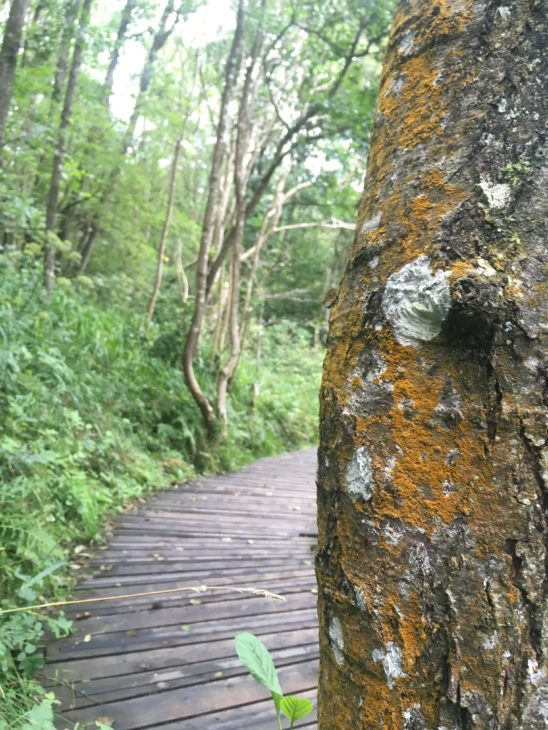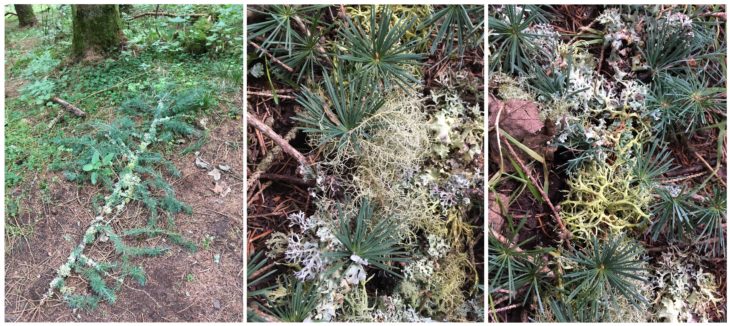What is Lichen?
At this time of year, when the trees begin to thin we can see much more of what’s going on in the forest canopy, including the lichen that lines the branches of many of our trees. While it seems like this “crusty stuff” just appears, it is actually there all year round and is a lot more exciting than you may initially think…
Lichens are described as ‘composite organisms’, which means they are created when two elements interact with one another. In this case, the two important organisms are fungi and algae. These interactions create lichens in many different shapes, sizes and colours, and there are currently around 20,000 known species.
To make identification easier, lichens are usually grouped into three main categories. The first category is Crustose, and is probably the most commonly seen lichen form. Their growth structure, known as the thallus, grows completely attached to trees and rocks, and often resembles a “crust” of dust like material.

The next variation is Squamulose which develops in scale like shapes. These are very similar to the Foliose lichens which can be differentiated by their complex leaf like thallus and most commonly resemble plant structures. Finally, Fruticose lichens have a large thallus that is stringy in appearance and often resembles hair… apart from its green colour!

In drier times lichens lose their colour, which is why they aren’t as noticeable in the summer. As the wet weather picks back up their colours will deepen and become more vibrant; because of this they were used to produce colour dyes in the past.
Whilst lichens are pretty to look at, they are also fantastic indicators of environmental health as they will only grow in areas with clean air – that’s why Falls of Clyde is a great place to spot them! They can also take hundreds of years to grow, so when you see lichens like those in the picture above, you can rest easy knowing that the environment is free from high levels of human disturbance.
Jenny Mann, Falls of Clyde Assistant Ranger
Help support our vital work and join us today!
Fun Fact: in Ancient Egyptian times lichens were used to fill the body cavity of mummies. To this day lichen derivatives are still key ingredients within perfume and deodorant mixtures.
Help protect Scotland’s wildlife
Our work to save Scotland’s wildlife is made possible thanks to the generosity of our members and supporters.
Join today from just £4 a month to help protect the species you love.
Preface
At this time of year, when the trees begin to thin we can see much more of what’s going on in the forest canopy, including the lichen that lines the …
